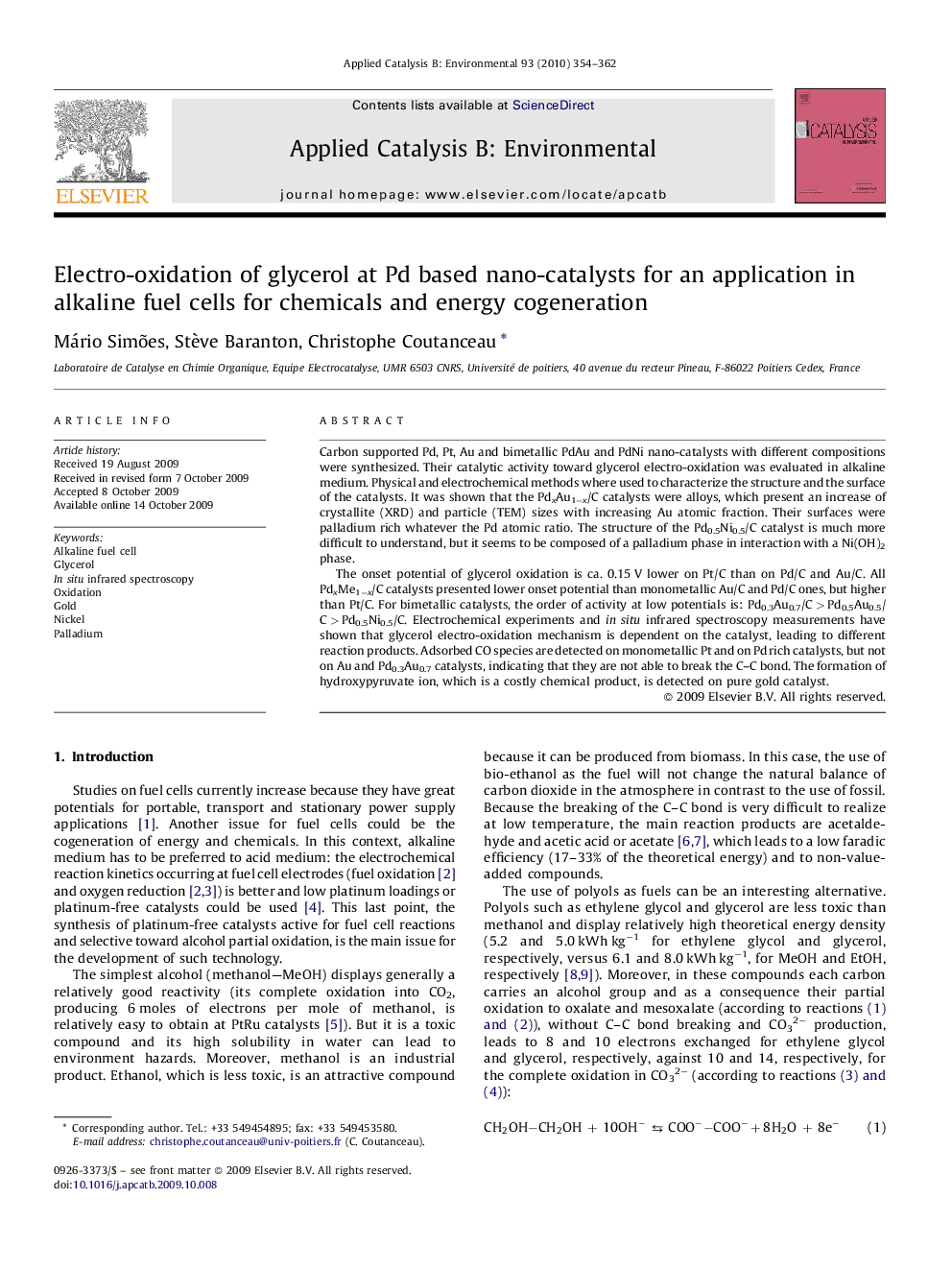| Article ID | Journal | Published Year | Pages | File Type |
|---|---|---|---|---|
| 47625 | Applied Catalysis B: Environmental | 2010 | 9 Pages |
Carbon supported Pd, Pt, Au and bimetallic PdAu and PdNi nano-catalysts with different compositions were synthesized. Their catalytic activity toward glycerol electro-oxidation was evaluated in alkaline medium. Physical and electrochemical methods where used to characterize the structure and the surface of the catalysts. It was shown that the PdxAu1−x/C catalysts were alloys, which present an increase of crystallite (XRD) and particle (TEM) sizes with increasing Au atomic fraction. Their surfaces were palladium rich whatever the Pd atomic ratio. The structure of the Pd0.5Ni0.5/C catalyst is much more difficult to understand, but it seems to be composed of a palladium phase in interaction with a Ni(OH)2 phase.The onset potential of glycerol oxidation is ca. 0.15 V lower on Pt/C than on Pd/C and Au/C. All PdxMe1−x/C catalysts presented lower onset potential than monometallic Au/C and Pd/C ones, but higher than Pt/C. For bimetallic catalysts, the order of activity at low potentials is: Pd0.3Au0.7/C > Pd0.5Au0.5/C > Pd0.5Ni0.5/C. Electrochemical experiments and in situ infrared spectroscopy measurements have shown that glycerol electro-oxidation mechanism is dependent on the catalyst, leading to different reaction products. Adsorbed CO species are detected on monometallic Pt and on Pd rich catalysts, but not on Au and Pd0.3Au0.7 catalysts, indicating that they are not able to break the C–C bond. The formation of hydroxypyruvate ion, which is a costly chemical product, is detected on pure gold catalyst.
